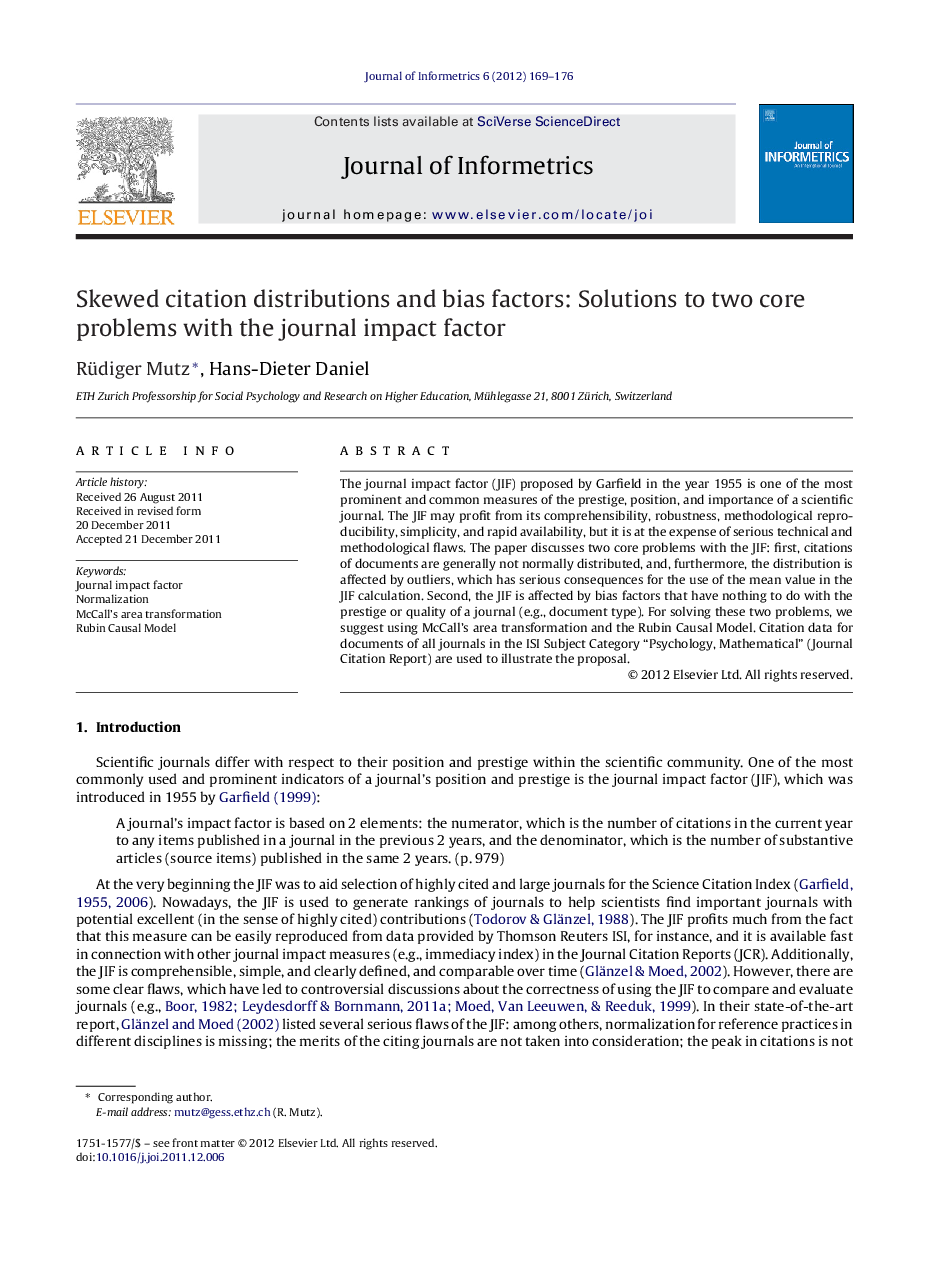| Article ID | Journal | Published Year | Pages | File Type |
|---|---|---|---|---|
| 523104 | Journal of Informetrics | 2012 | 8 Pages |
The journal impact factor (JIF) proposed by Garfield in the year 1955 is one of the most prominent and common measures of the prestige, position, and importance of a scientific journal. The JIF may profit from its comprehensibility, robustness, methodological reproducibility, simplicity, and rapid availability, but it is at the expense of serious technical and methodological flaws. The paper discusses two core problems with the JIF: first, citations of documents are generally not normally distributed, and, furthermore, the distribution is affected by outliers, which has serious consequences for the use of the mean value in the JIF calculation. Second, the JIF is affected by bias factors that have nothing to do with the prestige or quality of a journal (e.g., document type). For solving these two problems, we suggest using McCall's area transformation and the Rubin Causal Model. Citation data for documents of all journals in the ISI Subject Category “Psychology, Mathematical” (Journal Citation Report) are used to illustrate the proposal.
► Skewed distributions and bias factors are central problems of the journal impact factor. ► We suggested McCall‘s area transformation for the problem of skewed distributions. ► We suggested the Rubin Causal Model for the bias problem. ► The ISI Subject Category “Psychology, Mathematical” is used for illustration.
